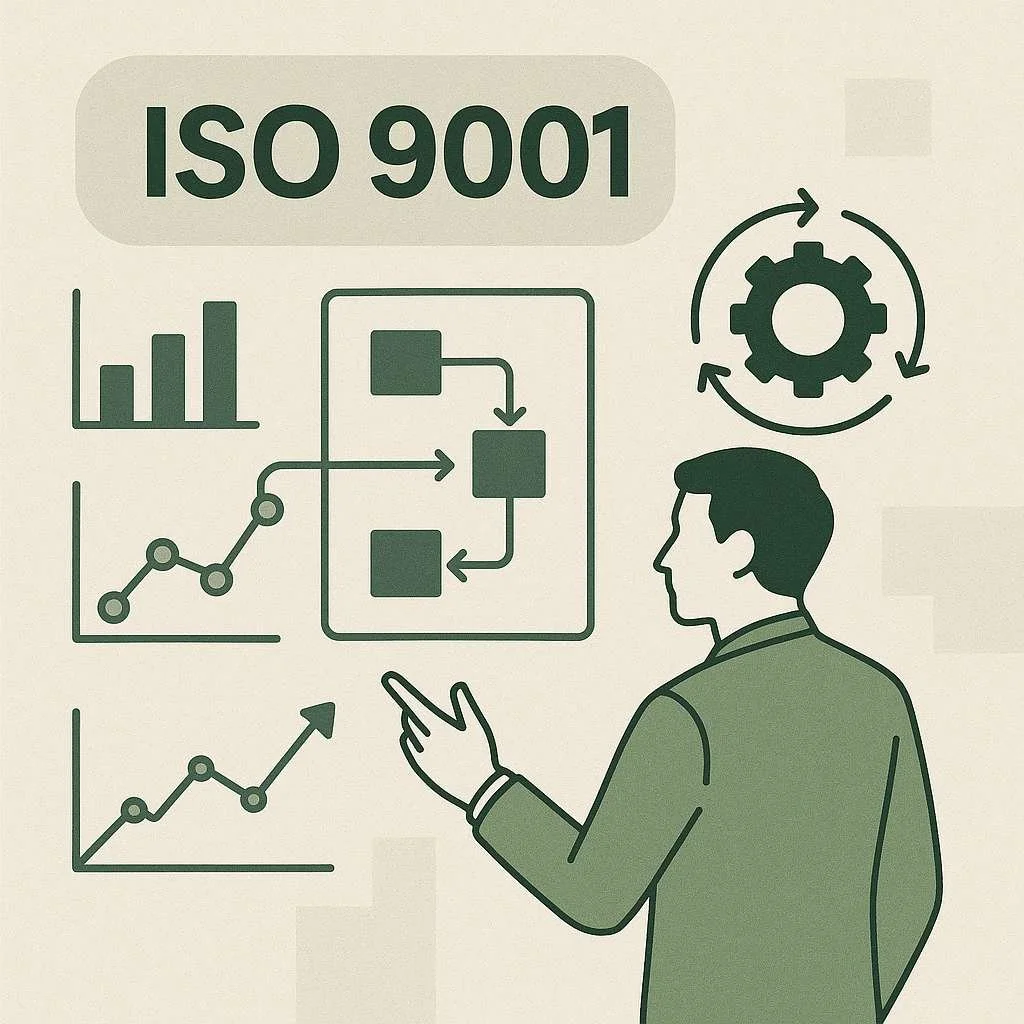ISO 9001 Quality Management System
A Quality Management System (QMS) certified to ISO 9001:2015 provides a structured framework to consistently deliver products and services that meet customer and regulatory requirements. By embedding risk-based thinking, process controls, and continual improvement into your operations, ISO 9001 drives efficiency, enhances customer satisfaction, and supports strategic growth.
Background & Context
Origins of ISO 9001: Established in 1987 by the International Organization for Standardization to harmonize quality requirements across industries.
Key Principles: Focus on customer orientation, leadership commitment, process approach, risk-based thinking, evidence-based decision making, and continual improvement.
Applicability: Used by organizations of all sizes and sectors—from manufacturing and healthcare to technology and professional services.
What Implementation Looks Like
Gap Assessment & Scoping
Conduct an initial review of existing processes against ISO 9001 requirements. Define the scope, boundaries, and objectives of your QMS.Process Mapping & Documentation
Develop process flowcharts, standard operating procedures (SOPs), work instructions, and quality manuals aligned with each clause of ISO 9001.Resource & Competence
Assign a QMS project lead and cross-functional team. Identify training needs and ensure staff competence through workshops on quality policy, objectives, and risk management.Internal Audits & Management Review
Implement an internal audit program to verify conformance and effectiveness. Conduct management reviews to evaluate system performance and resource needs.Certification Audit
Engage a third-party registrar for the stage 1 (documentation review) and stage 2 (on-site audit) assessments. Address any nonconformities and achieve certification.
Maintenance & Continual Improvement
Surveillance Audits: Schedule periodic audits (typically annually) to maintain certification and demonstrate ongoing compliance.
Performance Metrics: Track key performance indicators such as defect rates, customer complaints, on-time delivery, and corrective action closure times.
Corrective & Preventive Actions: Investigate root causes of nonconformities and implement action plans to prevent recurrence.
Management Reviews & Opportunities: Use review meetings to assess audit results, performance data, and feedback to identify improvement opportunities.
Integration with Other Systems: Align ISO 9001 with ISO 14001, 45001, and other frameworks for an integrated management system (IMS).
How Wintersmith Advisory Can Help
Expert Gap Analysis: We conduct comprehensive gap assessments to pinpoint your compliance strengths and weaknesses.
Tailored Documentation: Our consultants draft and refine QMS documentation to align with your unique processes and ISO requirements.
Hands-On Training: Interactive workshops and on-the-job coaching ensure your team understands and applies quality principles effectively.
Audit Support: We prepare you for internal and certification audits through mock assessments, corrective action planning, and registrar liaison.
Ongoing Partnership: Beyond certification, we provide surveillance audit coaching, performance monitoring tools, and continuous improvement facilitation.
Getting Started
Contact Wintersmith Advisory today to discuss your ISO 9001 QMS objectives and receive a customized implementation plan.
Contact us.
info@wintersmithadvisory.com
(801) 558-3928

